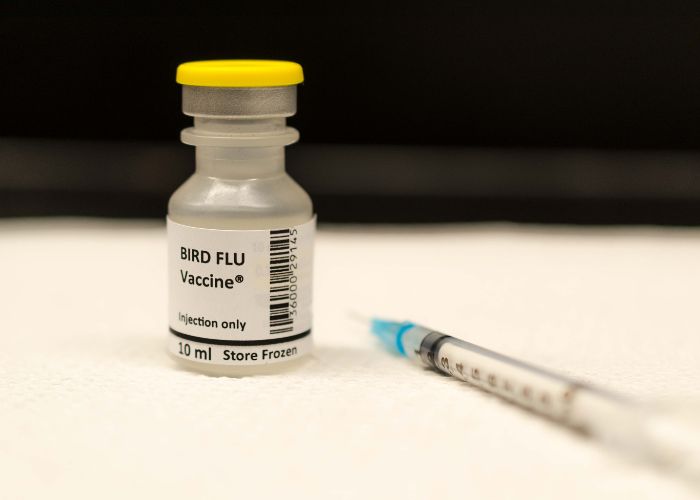MADRID – An outbreak of bird flu on a Spanish mink farm is worrying experts. They see signs that the H5N1 virus is adapting to mammals and could become more dangerous to humans as a result.
The pathogens had previously been found in other mammal species such as raccoons, foxes, martens or seals, Thomas Mettenleiter said. He is cited by the German Spiegel and is president of the Friedrich Loeffler Institute for Animal Health. However, until now there have been individual events where the virus has passed from a bird to a mammal.
However, with the outbreak in Spain last October, according to the researcher, “the pathogen really could have spread from mammal to mammal – that is, from mink to mink”. Other researchers also consider this possible or likely. The events in the Spanish mink farm could indicate a further adaptation step of the virus.
Ultimately, mink not infected with corona
The first animals died in the autumn of 2022 on a farm in northwestern Galicia, Science magazine reported. Initially, vets assumed the coronavirus was the trigger. But tests showed that the H5N1 virus had led to the deaths. As a result, the farm’s more than 50,000 minks were killed and their carcasses destroyed. The employees were not infected. A few days ago, an analysis of the case was published in the magazine “Eurosurveillance”.
Largest bird flu outbreak ever
The largest bird flu outbreak ever documented is currently rampaging among birds. It stretches across several continents. This gives the pathogen more opportunities to spread to mammals. In addition, the cramped conditions in which the minks were kept were conducive to such a possible spread among these animals, says Mettenleiter. The event in Spain was “definitely a warning sign”.
Mink farming as a breeding ground for mutations?
Tom Peacock, a virologist at Imperial College London, was even more drastic. “This is incredibly concerning,” he told Science magazine. For him, this is “a clear mechanism for how an H5 pandemic could arise.”
Distribution among mammals indicates greater risk to humans
Because the receptors that the virus attaches to in the airways of birds are rarer in mammals, they are usually spared the infection, according to Science. However, they can get sick, for example, by ingesting wild bird droppings or preying on infected birds, Hualan Chen, a virologist at the Harbin Veterinary Medical Research Institute in China, told the journal Nature. Distribution among mammals, on the other hand, indicates a greater risk to public health.
According to the “Science” report, it is not known how easily the virus found in minks can also infect or spread among humans. However, several mutations were found in virus samples from four animals. One of these helps the H5N1 virus to multiply better in mammalian tissue.
“It’s a Time Bomb”
According to the Spanish newspaper El Mundo, contamination in minks is complicating the worst bird flu season in Spain: “It is a time bomb”. The EU is considering vaccinating birds after the worst season of infections in livestock farms, which has plunged the sector into uncertainty. Although the risk to humans is low, the first transmission between mammals, detected in a Galician mink farm, is concerning: “The situation is very different from what we faced”.
More than 50 million animals have been slaughtered
In 2022, 37 bird flu outbreaks have been recorded in Spain. This meant 1,972,568 animals were lost (875,236 died and 1,097,332 had to be slaughtered), according to MAPAMA data. In Europe, between October 2021 and September 2022, 2,520 outbreaks have been registered on poultry farms alone and more than 50 million animals have been slaughtered.
“Worrying”
The latest poultry outbreak in Spain was recorded on December 20 at a goose farm in Valladolid. Concerns about economic losses and the impact on wildlife have been added in recent days to concerns over the publication of the study detailing the first global outbreak of avian flu in mink farming in Galicia.
Also according to Elisa Perez, a specialist in emerging pathogens at the Animal Health Research Center, the fact that this is the first time infections have occurred between mammals of the same species is a “cause of concern”. This shows that mink can become a ‘shaker’ of flu viruses, as is already the case with pigs.
Mink is an emerging risk species
Until now, pigs have been considered the main flu virus shaker. This is because they have receptors for bird flu, swine flu and human flu. So says Nacho de Blas, professor of Animal Pathology at the University of Zaragoza. He adds that the mink appears to be an emerging risk species “that we should not lose sight of”.


